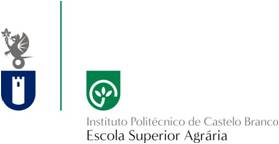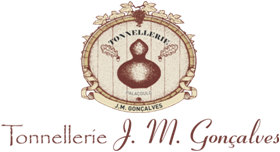The importance of wood in oenology
The liquid-tight wooden barrel, as it is known today, was probably invented by the Romans for the transportation of wine in the northern parts of the Empire, where wood was a more abundant natural resource than clay (Twede, 2005). By the time of the crusades, it became a common container in Europe due primarily to its mechanical strength, easy handling and transport, versatility of form, and it was obtained from a plentiful and inexpensive raw material (Twede, 2005). From the second half of the twentieth century onwards, the central role of the wooden barrel in the storage/ageing of wine or wine spirit was recognized. This aspect will have been decisive for the importance it has acquired (Singleton, 1974).
In addition to oak wood, the wood of several forest tree species, such as pine, eucalyptus, mahogany and acacia, was used in this kind of containers (Parodi, 2000). In European countries bordering the Mediterranean Sea, the chestnut wood had great importance owing to historical, economical and social aspects of its cultivation (Bounous, 2005); it was also used to make barrels for shipping European wines (Taransaud, 1976). Several reasons led to their gradual disuse, except the oak wood.
Forest tree species currently used and their influence on ageing
|
Forest tree species currently used and their influence on ageingForest tree species currently used and their influence on ageingCurrently, oak and chestnut wood are used in cooperage for the production of barrels for wine spirit’s ageing. The chestnut belongs to Castanea sativa Mill. (European chestnut) species and the oaks belong to the following species:
|
 |
Among them, the oak wood, especially from the French region of Limousin (mostly Quercus robur L.), is traditionally used in the ageing of wine spirits, including Cognac and Armagnac. Among them, the oak wood, especially from the French region of Limousin (mostly Quercus robur L.), is traditionally used in the ageing of wine spirits, including Cognac and Armagnac. These kinds of wood are also used in the production of wood pieces (staves, cubes, chips, sawdust, among others) designed for the ageing by alternative technologies. Over the last 20 years, an innovative and comprehensive study was carried out by our team on the physicochemical characteristics and sensory properties imparted by oak wooden barrels and chestnut wooden barrels to the wine spirit, based on several research projects (read more at “Research”).
The results obtained under different ageing conditions (toasting level; barrel size; ageing time) showed remarkable consistency and allowed concluding:
- Chestnut wood is highly suitable for the ageing of wine spirit, as it affords high quality and differentiated products, as well as a faster and less costly process (also due to the lower price of the barrel and the possible reuse more often);
- Oak wood from Quercus pyrenaica grown in Portugal provides a similar but more attenuated effect, and with a higher barrel price;
- French oak wood from Limousin gives interesting results, although associated with a slower and more expensive ageing process;
- American oak wood (Quercus bicolor/Quercus stellata/Quercus lyrata/Quercus alba) and French oak wood from Allier (Quercus sessiliflora) show a weak performance, unlike their effect in the ageing of wines, providing lower contents of wood compounds and thus promoting less intense colour and other sensory properties.

 |
The barrel making process and its influence on ageing
Among the operations comprising the barrel making process in cooperage, the seasoning/maturation and the heat treatment are of outmost importance due to influence on the wood chemical composition and therefore on wooden barrel’s quality and ageing result. Research shows that the natural seasoning (made in open-air parks), as opposed to the artificial one (made in kiln-dryers), promotes the loss of moisture and tannins by the wood but also its colonisation by microorganisms (such as fungi and bacteria).
|
|
Indeed, the physicochemical phenomenon that takes place during this stage, together with the microorganisms’ action, is responsible for the wood maturation. The characteristics thus acquired by the wood, such as the pool of compounds that can be released into the wine spirit, favour the ageing process. An average seasoning/maturation period of 36 months for oak wood and 18 months for chestnut wood is required to achieve such result (Chatonnet, 1995; Canas et al., 2006). . |
 |
 |
In Europe, the heat treatment is made by the direct effect of fire inside the barrel, together with internal and external moistening. In the first phase, called bending, the alteration of plasticity of the wood fibers under moderate temperature is promoted to make them moldable and allow their bending to give the concave shape to the barrel. Thereafter, the barrel undergoes the toasting phase, during which higher temperatures are used to toast the inner surface of the staves and induce significant changes in the chemical composition and structure of the wood, which favour the ageing process. The toasting level depends on the binomial temperature/time applied and is usually classified as “light”, “medium” and “heavy”; intermediate levels, such as "medium plus" toasting, are also used.
|
Previous studies revealed that for the same ageing time greater enrichment of the wine spirit in wood compounds and therefore more evolved colour and other sensory properties are induced by the heavy toasting, and secondarily by the medium toasting (Caldeira et al., 2006; Canas, 2017).

Photos: J.M. Gonçalves Cooperage (Palaçoulo, Miranda do Douro)
Caldeira I., Mateus A.M., Belchior A.P., 2006. Flavour and odour profile modifications during the first five years of Lourinhã brandy maturation on different wooden barrels. Analytica Chimica Acta, 563, 264–273.
Canas S., 2017. Phenolic composition and related properties of aged wine spirits: Influence of barrel characteristics. A review. Beverages, 3, 55-76.
Canas S., Caldeira I., Mateus A.M., Belchior A.P., Clímaco M.C., Bruno de Sousa R., 2006. Effect of natural seasoning on the chemical composition of chestnut wood used for barrel making. Ciência e Técnica Vitivinícola, 21, 1-16.
Chatonnet P., 1995. Influence des procédés de tonnellerie et des conditions d’élevage sur la composition et la qualité des vins élevés en fûts de chêne. 268 pp. Thèse doctorat de l’Université de Bordeaux II. Institut d’œnologie.
Bounous G., 2005. The chestnut: a multipurpose resource for the new millennium. ISHS Acta Horticulturae, 693, 33-138.
Parodi G., 2000. A proposito di barriques, Vignevini, 3, 77-83.
Singleton V.L., 1974. Some aspects of wooden container as a factor in wine maturation. Chemistry of wine making, 311 p, ACS Pub. Co, New York.
Taransaud J., 1976. Le livre de la tonnellerie, 237p, La roue à livres diffusion, Paris.
Twede D., 2005. The cask age: the technology and history of wooden barrels. Packaging Technology and Science, 18, 253-264.












